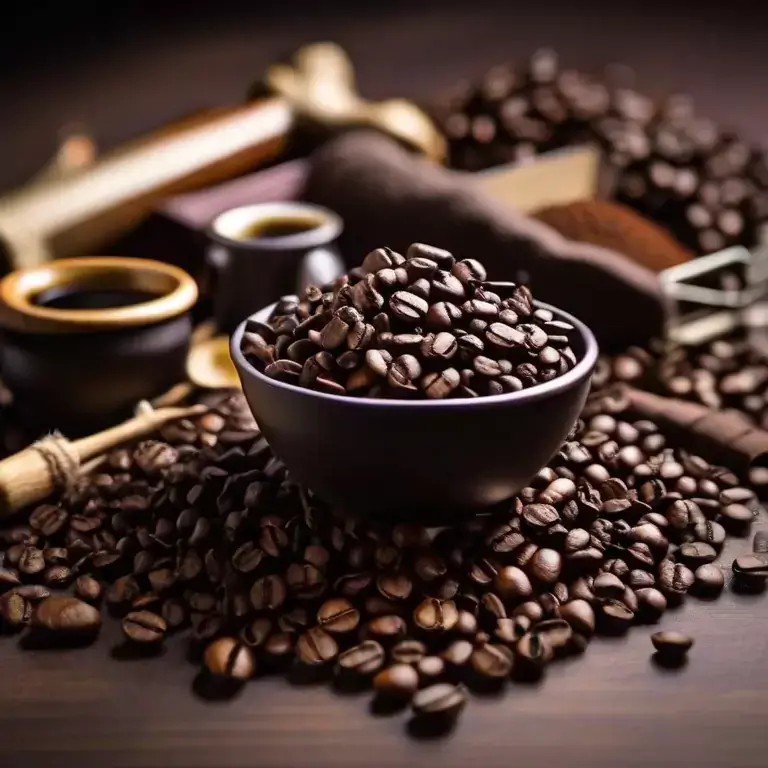Coffee beans are the seeds of the Coffea plant and are typically categorized into two main types: Arabica and Robusta. Arabica beans, which offer a sweeter and more complex flavor, are often preferred by coffee aficionados. On the other hand Robusta beans have a stronger, more bitter taste and higher caffeine content. Both types of beans can be used in a variety of brewing methods, including drip coffee, French press, and pour-over.
Espresso beans are not a specific type of coffee bean but rather a different roasting and grinding process designed to enhance the rich, concentrated flavors in espresso drinks. Typically, a blend of Arabica and Robusta beans is used to achieve a balanced flavor profile. The beans are roasted darker and ground finer, allowing for a quick extraction of intense flavors and a thicker crema when brewed under pressure.
Origin and Cultivation
Coffee beans originate from tropical regions, primarily within the “Bean Belt,” which includes countries in Central and South America, Africa, and Asia. The Coffea plant requires specific growing conditions such as high altitudes, steady rainfall, and rich soil. Arabica beans thrive in higher altitudes, while Robusta beans are hardier and can grow at lower elevations and withstand harsher climates. Cultivating coffee plants involves several stages: planting, harvesting, processing, and drying. Each step significantly impacts the final flavor and quality of the beans.
Roasting Process
The roasting process for coffee beans involves carefully controlled heating to transform green coffee beans into the aromatic, flavorful brown beans we use to brew coffee. The process consists of several stages, including drying, browning, and development. During roasting, beans undergo complex chemical reactions, known as the Maillard reaction, which enhances their flavor and aroma. Roast levels can range from light to dark, each offering a different flavor profile and intensity.
Espresso Beans
Roasting espresso beans requires a similar but generally longer and darker roast than regular coffee beans. This extended roasting intensifies the beans’ natural oils, sugars, and flavors, producing the robust and concentrated taste necessary for espresso. The goal is to achieve a balance of sweetness, bitterness, and acidity, with a notable crema layer on top of the shot. Precision and consistency in the roasting process are crucial to maintain the quality and signature intensity of espresso.
Flavor Profile
The flavor profile of coffee beans can vary significantly depending on the roast level. Light roasts tend to have a more acidic and fruity taste, often reflecting the original flavors of the bean’s origin. Medium roasts offer a balanced flavor with a mix of acidity and body, while dark roasts provide a more robust, bittersweet, and sometimes smoky flavor. Each roast level highlights different aspects of the beans, allowing coffee drinkers to explore a variety of tastes and aromas.
Espresso beans are typically roasted to a darker level, which brings out a deeper, more intense flavor. This dark roast profile is characterized by rich, bold flavors with notes of chocolate, caramel, and sometimes a hint of smokiness. The fuller body and lower acidity make it perfect for the concentrated nature of espresso shots, offering a complex and satisfying taste experience with each sip.
How Much Caffeine Is In One Coffee Bean?

Each coffee bean contains about 6 milligrams of caffeine. However, this amount can vary slightly depending on the type of bean and its size. It’s important to remember that the caffeine content can also be influenced by the method of brewing and the grind size.
How Much Whole Bean Coffee Per Cup?
When making a cup of coffee, it’s common to use approximately 10 grams (around two tablespoons) of whole coffee beans per six-ounce cup of brewed coffee. This can vary based on personal preference and the desired strength of the coffee. Grinding the beans right before brewing ensures a fresher taste and preserves the beans’ aromatic qualities. Adjust the proportions if you prefer a stronger or milder cup of coffee, but this is generally the recommended starting point for most coffee enthusiasts.
